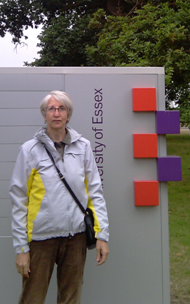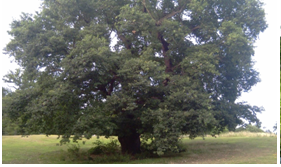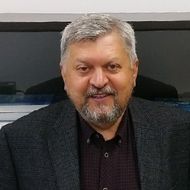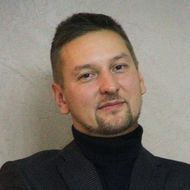- A
- A
- A
- ABC
- ABC
- ABC
- А
- А
- А
- А
- А
- HSE University
- Faculty of Economic Sciences
- Department of Statistics and Data Analysis
- News
- Faculty Fellowship: The Essex Summer School
-
Department
109028, Moscow,
Pokrovsky Boulevard 11, Rooms: S435, S424
Phone: +7 (495) 772-95-90*27039, 27038
Email: erichkova@hse.ru, ochikunaev@hse.ru
The Department of Statistics and Data Analysis, which is part of HSE’s Economics Faculty, brings together leading Russian and international specialists in the field of business statistics, macroeconomic statistics, stochastic analysis, actuarial mathematics and statistical methods for analysing economic and social processes.
Ajsmontas B., Alekhina S., Aleksandrova L. et al.
Springer, 2024.
In press
Chaudru de Raynal P., Jabir J. M., Menozzi S.
Stochastics and Partial Differential Equations: Analysis and Computations. 2024. P. 1-54.
Sinyavskaya O., Pishnyak A., Cherviakova A. A. et al.
In bk.: Inclusive education in the Russian Federation: Scoping International and Local Relevance. Springer, 2024. P. 139-167.
In press
Kelbert M., Moreno-Franco H. A.
math. arXiv. Cornell University, 2025
109028, Moscow,
Pokrovsky Boulevard 11, Rooms: S435, S424
Phone: +7 (495) 772-95-90*27039, 27038
Email: erichkova@hse.ru, ochikunaev@hse.ru

Faculty Fellowship: The Essex Summer School
In August 2014, Elena Kopnova and Lilia Rodionova, Associate Professors of the HSE's Department of Statistics and Data Analysis, attended a short-term course in Dynamic Models for Social Scientists at the Essex Summer School in Social Science Data Analysis and shared their impressions.
Elena Kopnova
The University of Essex Summer School covers econometric research methods and consists of three sessions offering a series of courses in different subjects. We attended the third session, the Modelling Dynamics course. In this practice-oriented course, we studied the theory independently using the materials provided and used the classroom time mainly to discuss how to apply the models to real-life processes. Particularly informative and helpful were the computer lab classes where we used various software packages, such as EViews, Rats, STATA, R, to solve practical problems.
We were a very diverse group, including undergraduates, faculty, researchers, and entrepreneurs. I believe that the HSE's undergraduates, once they learn the basics of econometrics, could benefit from attending this school, particularly the first two sessions.
We will remember the amazingly cosy atmosphere felt at the Summer School due to seamless organisation of all activities—indeed, the University of Essex has 47 years of experience in offering these courses. And, of course, we will remember Wivenhoe Park where we lived, with its ancient oaks and scenic river.
Lilia Rodionova
The University of Essex is a great place to combine intensive studies at the Summer School with relaxing rest times. The University is located in the county of Essex, in Colchester, surrounded by a beautiful forest with old oak trees, a pond for ducks and swans, and with rabbits and squirrels running everywhere on campus. And of course, the Summer School employs world-famous professors.


I chose the course in Dynamic Models for Social Scientists specifically to improve my own course in Econometrics for fourth year bachelor's students, and also to broaden my research horizons. I found everything in the course very interesting, including the presentation, theory, course structure, applications and cases studies, as well as the sections on using econometric packages on real data. The Essex Summer School more than met my expectations in that I gained invaluable experience and new insights for my teaching and research.
I would particularly like to mention professors Harold D. Clarke and Guy D. Whitten. It was unusual to see two professors delivering one lecture together in the same classroom: e.g. one would talk and show slides, while the other was listening and offering comments and examples and answering questions—and then they would switch roles in a very balanced and engaging way. The course consisted of nine major topics, beginning with the Introduction: Analyzing Time Series Data and ending with Vector Autoregression, including both theoretical and practical components. The practical part was particularly interesting, as prof. Clarke often cited examples from his own well-known papers published in international journals, while explaining in detail how he had evaluated the models, showing the data used in the studies, and sharing the challenges he had faced in the modeling and his solutions. In fact, he presented a real-life case study on how to conduct research, obtain some good findings, come up with interesting interpretations, and make them publication-worthy. In particular, when we studied structural modeling using transfer function, prof. Clarke illustrated this theory through an example from his paper Recapturing the Falklands published in the British Journal of Political Science, Vol. 20, No. 1 (Jan., 1990). Later, we practiced by accurately reproducing all his calculations from the paper — it was a unique experience.
We practiced with four econometric packages—Stata, Eviews, R and RATS. Indeed, here at the HSE we are up to date, using Stata and Eviews for practical training in econometrics. We found, however, that some problems—such as construction and evaluation of transfer function—cannot be solved using Stata, despite its near-infinite possibilities.
The summer school gave me so many ideas that I cannot wait for the new school year to begin. I’m confident that the things I learned there will benefit the students of our department taking the Econometrics course.
- About
- About
- Key Figures & Facts
- Sustainability at HSE University
- Faculties & Departments
- International Partnerships
- Faculty & Staff
- HSE Buildings
- Public Enquiries
- Studies
- Admissions
- Programme Catalogue
- Undergraduate
- Graduate
- Exchange Programmes
- Summer Schools
- Semester in Moscow
- Business Internship
-
https://elearning.hse.ru/en/mooc/
Massive Open Online Courses
-
https://www.hse.ru/en/visual/
HSE Site for the Visually Impaired
-
http://5top100.com/
Russian Academic Excellence Project 5-100
- © HSE University 1993–2025 Contacts Copyright Privacy Policy Site Map
- Edit


